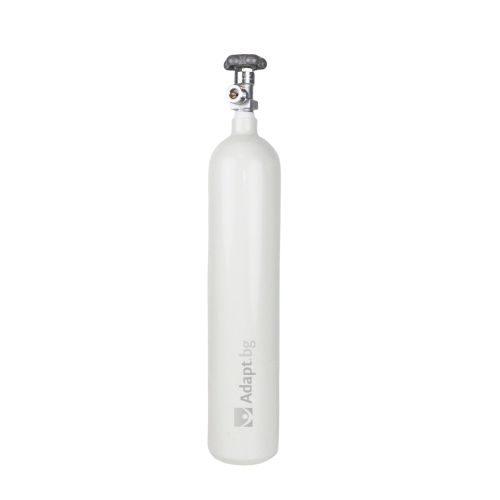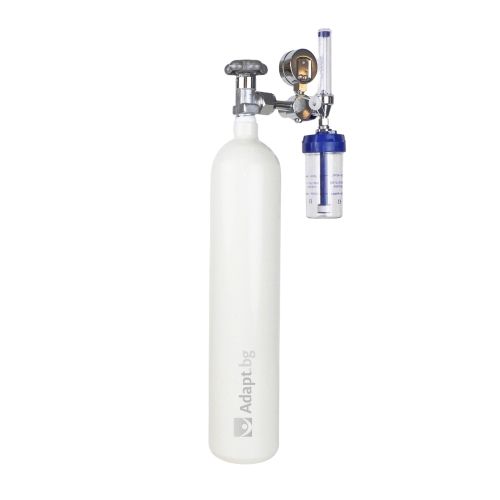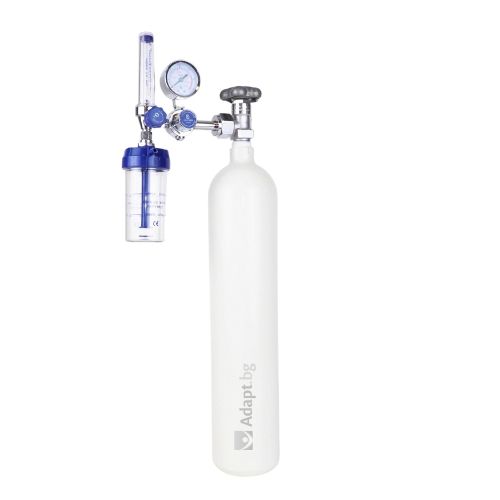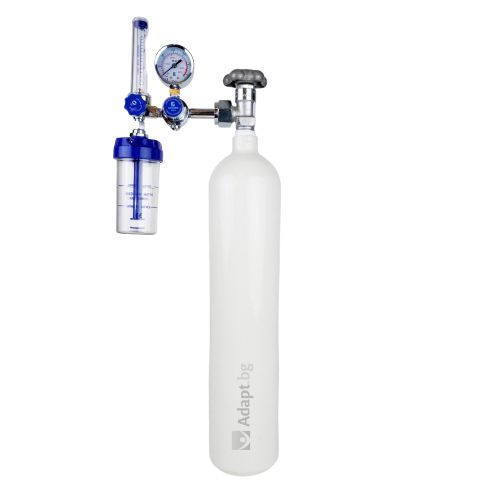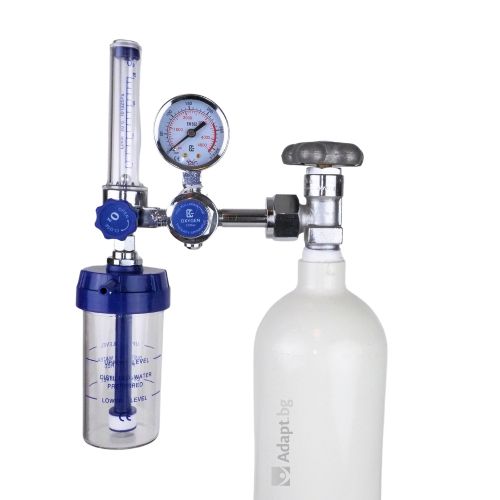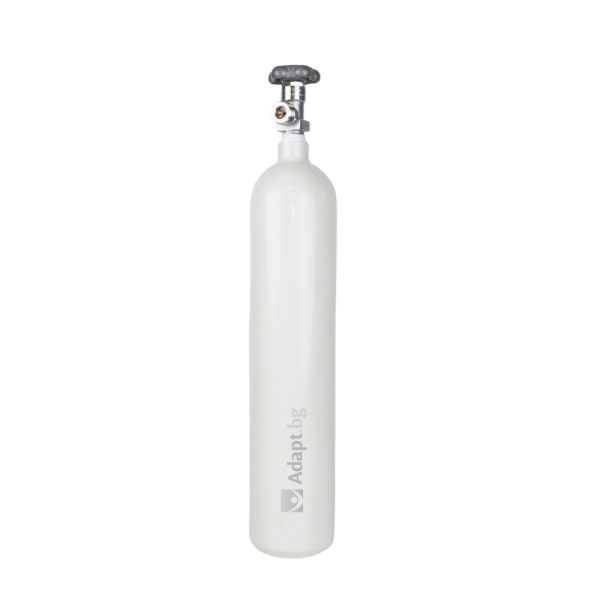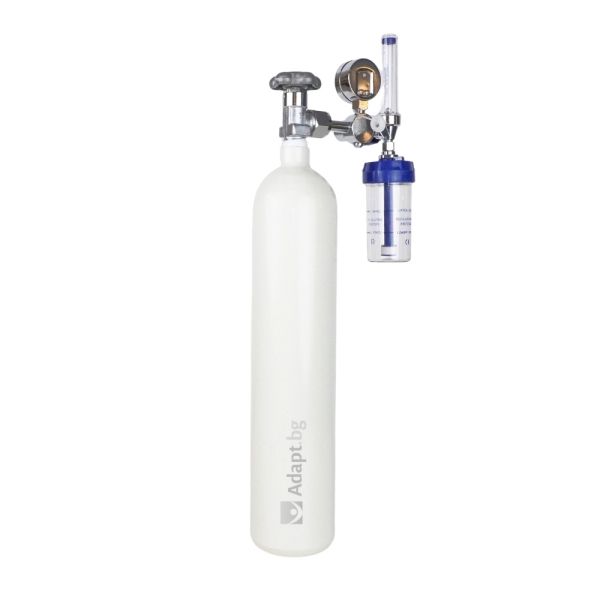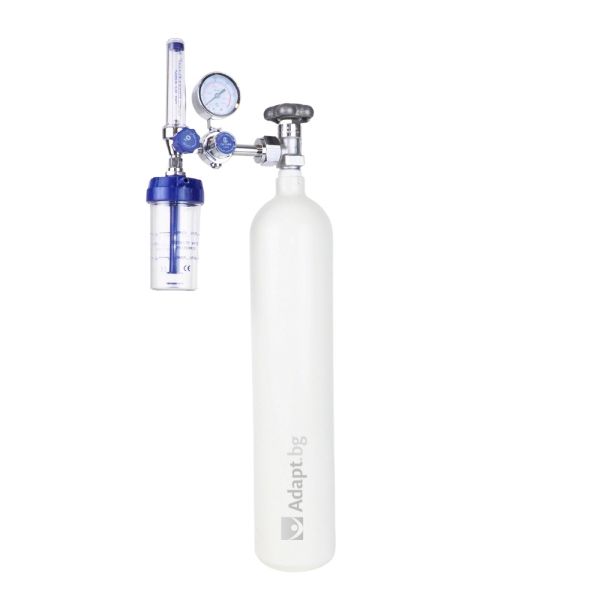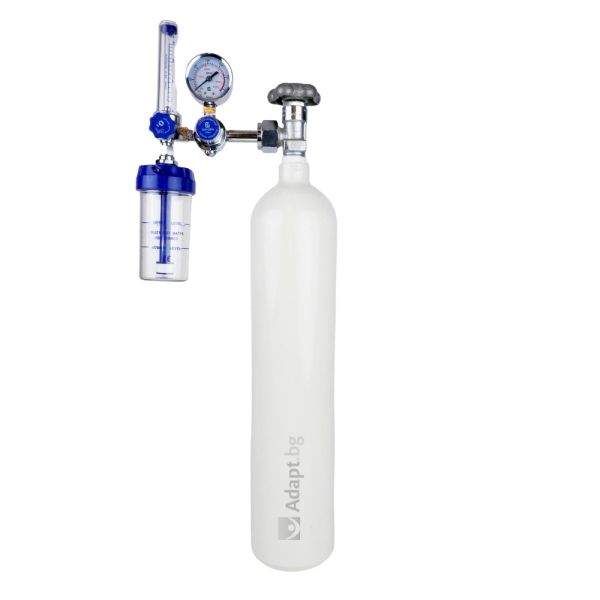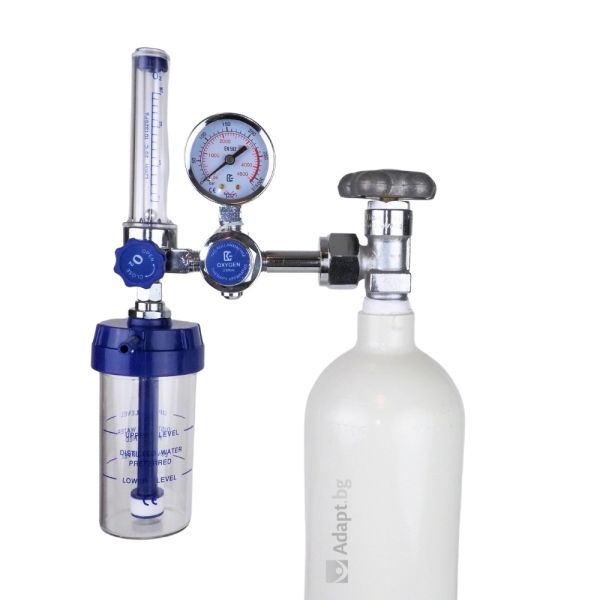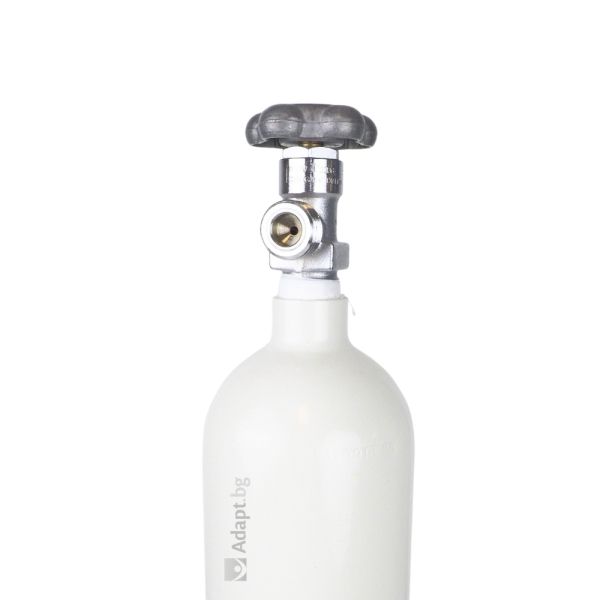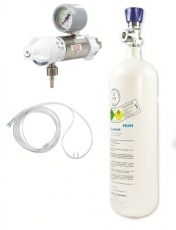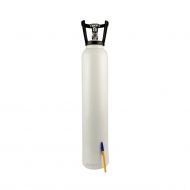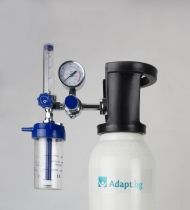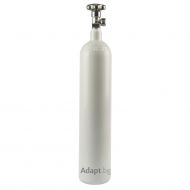The bottle is for sale complete with a reducer valve, humidifier and nasal cannula. Each ADAPT oxygen bottle is filled with compressed medical oxygen and is ready for use.
Oxygen tank - usage
Oxygen tanks are mainly (usually) used in hospitals or ambulances, but they can also be used at home for patients who need supplementary oxygen for (with) the following conditions:
- Treatment for pulmonary fibrosis;
- Hearth failure;
- Chronic obstructive pulmonary disease (COPD) and others.
Oxygen tanks are often used as a backup device by people using oxygen concentrators.
Note: Oxygen concentrators are a much more effective and reliable option than oxygen tanks and are the preferred choice for oxygen therapy due to their reliability and the unlimited oxygen supply they can provide.
Reduction valve
The reduction valve (or reductor) decreases the pressure of the oxygen gas inside the oxygen tank to a low, steady and constant pressure of 4 bars and is used to provide oxygen with a flow from 0 to 15 liters per minute (l/min) to the patient
The reductor has a connection thread G3/4 and needs to be mounted from the user's side to the oxygen tank's valve using a AA32 wrench. You should always check for any gas leaks between the oxygen tank's valve and the reductor before usage. The rubber seals tend to wear off with time and there might be some gas leakages. You can replace them with the additional set provided with the standard package.
Humidifier
The humidifier needs to be connected firmly to the oxygen tank to ensure there is no leakages of gas. The cannula hose must be tightly inserted into the humidifier. To ensure proper therapy the cannula must be inserted in the patient nostrils.
Use distilled water and fill the humidifier to the marked lines.
Using the regulator valve
Before using the regulator you need to open the valve above the oxygen tank, then you can set the amount of provided oxygen using the regulator and watching the flowmeter values from 0 do 15 liters per minute. Always follow your physician's prescription regarding the flow rate and therapy hours per day !
After you finish using the tank, make sure you close the valve so that the flowmeter shows a value of "0".
Storage and safety
Protect the oxygen by preventing exposure to flames, dirt, oil and dust. Transport it carefully and use it with caution. Don't use it under any circumstances if there are leakages in the system !
Store you oxygen tank in a clean, dry place under recommended temperatures from -10 to 40 degrees. Clean it by using a wet towel.
Technican information for the reductor valve
|
Name of device |
Reductor Valve for Oxygen Tanks |
|
Used gas |
Medical Oxygen (O2) |
|
Directive |
Council Directive 93/42/EEC |
|
Applied standard |
EN ISO 10524-1 |
|
Connection thread (female)
|
G3/4” DIN 477 |
|
Exit (Female) |
M10 x 1 DIN 13 |
|
Entrance pressure |
230 bar |
|
Exit pressure |
4 bar |
|
Flowmeter scale |
0-315 bar (KL 2.5) |
|
Exit flow |
0-15 l./min. |
|
Weight |
850 gr. |
|
Size |
160 x 90 x 290 mm |
|
Working temperature |
Between -200С and +600С |
| File | Info |
|---|---|
 СЕРТИФИКАТ ЗА АНАЛИЗ НА ПАРТИДИ
СЕРТИФИКАТ ЗА АНАЛИЗ НА ПАРТИДИ
|
[PDF, 393.56 KB] |
 EC Certificate Full Quality Assurance System
EC Certificate Full Quality Assurance System
|
[PDF, 529.8 KB] |
 CERTIFICATE CN1421898
CERTIFICATE CN1421898
|
[PDF, 226.01 KB] |
 Декларация за съответствие - 3 литра кислородна бутилка
Декларация за съответствие - 3 литра кислородна бутилка
|
[PDF, 729.16 KB] |





